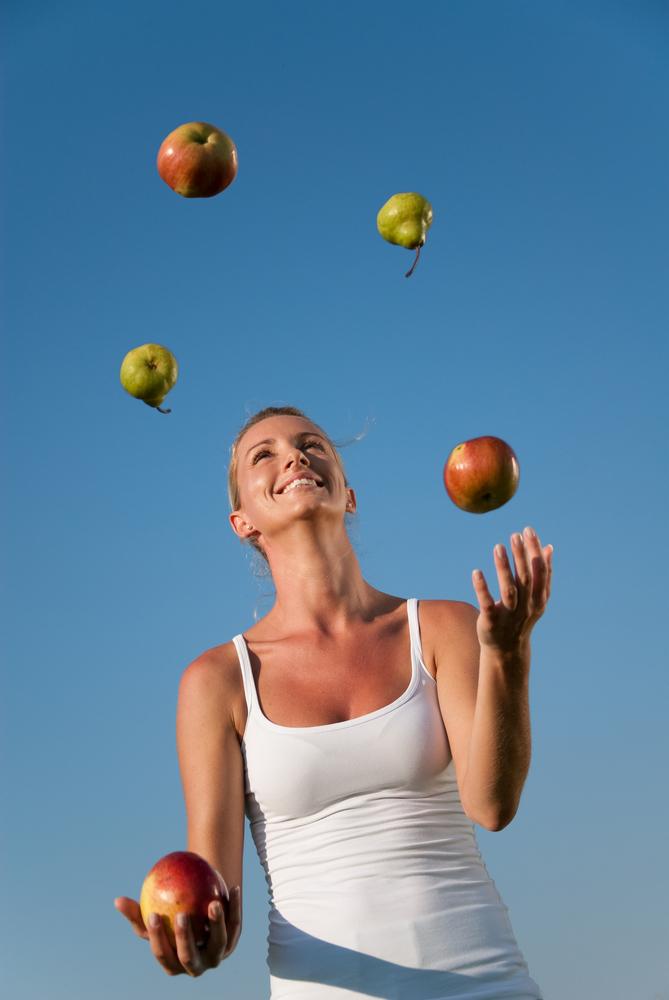- Home
- Play & Learn Home
- Online Enrichment
- Experience Modern Israel
- Israel It's Complicated
- Jewish and Me
- Jewish Holidays Jewish Values
- Jewish Values in Genesis and Jewish Values in Exodus
- Min Ha’aretz
- Our Place in the Universe
- Simply Seder
- The Prophets: Speaking Out for Justice
- Making T'filah Meaningful
- Make, Create, Celebrate
- Yom Haatzmaut Resources
- Hebrew Apps
- About The OLC
- What is the OLC?
- Introduction
- Get Started
- Resources
- OLC Content
- Parent Materials
- See My OLC Classes
- Store
The Juggling Flow
Tishrei is the month for apples and honey, blowing the shofar, building a sukkah and juggling. After all, Rabbi Shimon ben Gamliel, head of the Great Sandhedrin, used to juggle eight burning torches on the Temple Mount during the Water Drawing Celebration, which took place during Sukkot. But juggling also reminds us of the concept of teshuvah, the process of returning to our better selves and of strengthening our connection to the sacred. Just as learning to juggle involves practicing a new skill until you become proficient, changing our behavior takes time and practice until it becomes natural.
To celebrate Tishrei and juggling, check out the link below to see comedian Chris Bliss juggling three balls in sync with music from the Beatles. A volatile war rages inside the juggling world, but fear not. On this battlefield, bravura replaces bullets, and bruised egos are the only injuries. Comedian Chris Bliss started the brawl (quite unintentionally) when he uploaded to his web site a video of himself juggling three balls in sync with music from a medley of Beatles songs. Bliss’ video, which is the final four minutes of his standup comedy routine, spread like wildfire through cyberspace.
Most viewers raved about his performance-most viewers, that is, except Jason Garfield, the bad boy of juggling.
Garfield resented Bliss' "Must See Finale" because he despises Hollywood-types who juggle. "It's fine if people like watching Chris Bliss' routine," Garfield says, but "they should understand they are not seeing great juggling. They are seeing a performance they enjoy for other reasons." Great juggling, he adds, demands sublime athletic ability. It's "a display of human determination bringing order to the chaotic physical world."
(Wow. Who knew jugglers had so much in common with the Creator?)
Not surprisingly, Garfield's juggling universe has little room for circus clowns—or Chris Bliss! To emphasize his point, Garfield filmed his own video volley, which he dismissively called "The Bliss Diss." In it, Garfield not only juggles five balls in time to the Beatles soundtrack, but also executes several difficult juggling maneuvers.
But before you decide who is best-Bliss or Garfield-try your hand (or better yet, both hands) at juggling. The aseret yemei teshuvah, ten days of repentance and Sukkot are ideal times to learn to juggle. In fact, the Talmud mentions juggling five times in connection with holiday celebrations. The most amazing feat belonged to Rabbi Shimon ben Gamliel (10 B.C.E.—70 C.E.), head of the Great Sanhedrin. Thousands of pilgrims gathered each year on the Temple Mount during the Water Drawing Celebration-an ancient ritual that commemorated drawing water from a nearby stream for the Temple service. Rabbi Shimon ben Gamliel entertained the boisterous crowds by juggling eight burning torches. The Talmud (Sukkah 53a) says that his performance thrilled everyone who saw it and fulfilled the Biblical verse, "You shall draw forth water in gladness" (Isaiah 12:3).
If the only benefit were that it makes people happy, then learning to juggle would still be worth the effort. But the steps toward becoming an amateur juggler also teach important lessons abouth teshuvah, the process of returning to our better selves and of strengthening our connection to the sacred. Follow the directions below, and soon you'll experience the High Holy Day "juggling flow."
- Begin by tossing one ball (red) back and forth between your hands, which should remain no more than shoulder width apart. Toss the ball in an arc no higher than eye level.
- Work toward establishing a smooth rhythm.
- When you feel comfortable, gradually toss the ball without looking.
- Now introduce a second ball (blue). Hold one ball in each hand. Remember to keep your hands shoulder width apart.
- Toss the red ball from your weaker hand to your dominant hand. Throw it no higher than eye level. When the red ball reaches its highest point, toss the blue ball so it passes inside the red ball, but at the same height-eye level.
- Establish a rhythm so the timing between throws and catches is similar.
- Practice with two balls until you're ambidextrous, that is,comfortable throwing and catching with both hands.
- Finally, introduce the third ball (green).
- Hold the red ball and the green ball in your dominant hand, and put the blue ball in your weak hand. Toss the red ball toward your weak hand. (Remember, keep the throw at eye level.) When the red ball reaches its highest point, toss the blue ball inside the red ball. You mastered this in #5 above. Catch the red ball with your weak hand.
- Now you should have the red ball in your weak hand, the green ball in your dominant hand, and the blue ball in the air. When the blue ball reaches its highest point, toss the green ball inside it. Now you should have the red ball in your weak hand, the blue ball in your dominant hand, and the green ball in the air. Repeat this pattern.
0


